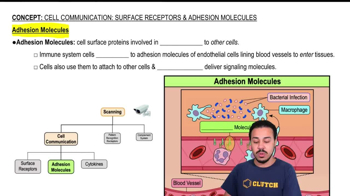Mark the following statements as true or false. If a statement is false, correct it to make a true statement.
Epithelial tissues function in protection, immune defenses, secretion, transport, and sensation.
 Verified step by step guidance
Verified step by step guidance Verified video answer for a similar problem:
Verified video answer for a similar problem:



 0:48m
0:48mMaster 5 Characteristics of Epithelia with a bite sized video explanation from Bruce Bryan
Start learning